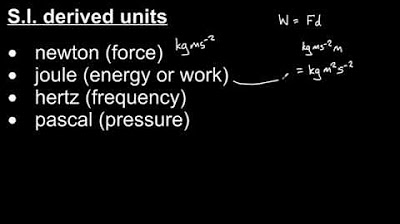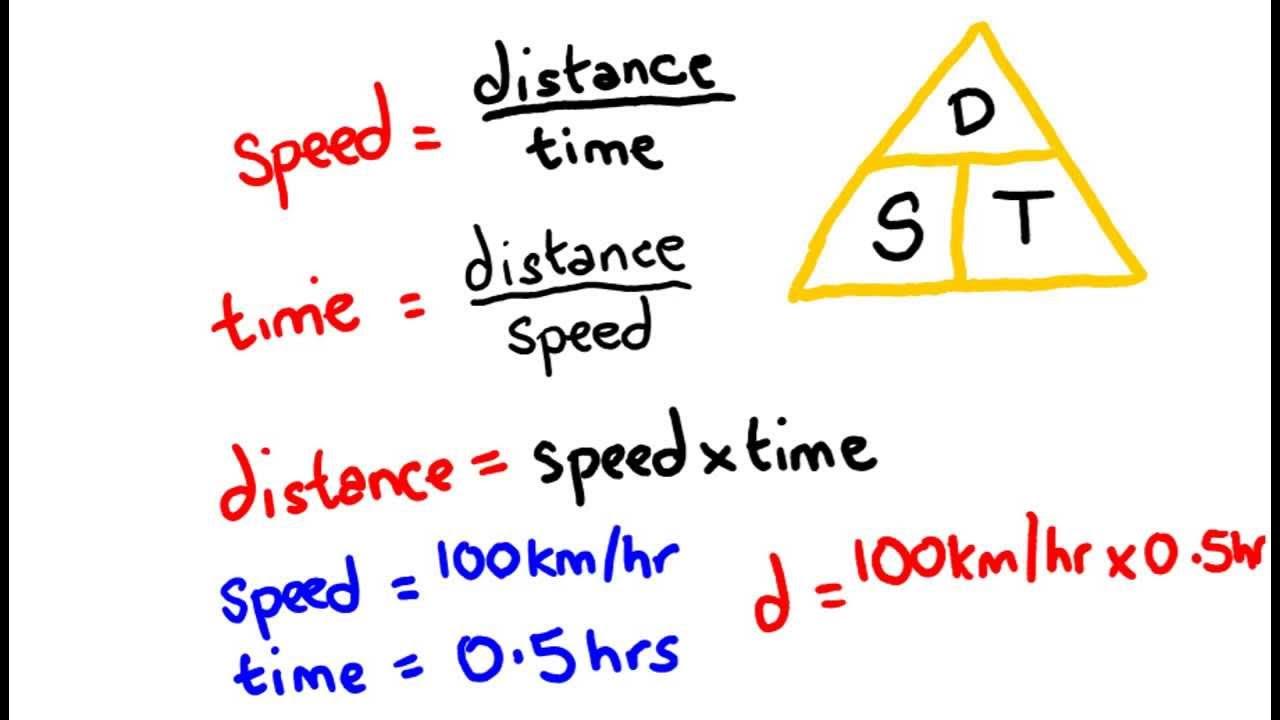College Physics 1: Lecture 4 - Units and Unit Conversions
TLDRIn this engaging lecture, the importance of units and unit conversions in physics is emphasized. The lecturer explains that measurements require both a numerical value and a unit, using the example of purchasing cheese by weight. The International System of Units (SI) is introduced as the global standard for scientific work, with a focus on the base units of time (seconds), length (meters), and mass (kilograms). The concept of unit prefixes, which relate to base units by powers of 10, is also discussed. The lecture highlights the significance of accurate unit usage through the tragic case of the Mars Climate Orbiter, which was lost due to a unit conversion error. The process of unit conversion is then outlined, with examples provided to demonstrate how to convert between different units, such as from miles to kilometers and from miles per hour to meters per second. The summary concludes by stressing the foundational role of understanding units and conversions in the study of physics.
Takeaways
- 📏 Units are essential in measurements as they provide context to numerical values.
- 🌐 The English system of units is commonly used in daily life in the United States, but SI units are preferred in scientific work due to their international recognition.
- 🕒 In Physics 1, the primary SI units of concern are seconds for time, meters for length, and kilograms for mass.
- 🔢 Derived units, like speed (meters per second), are combinations of the base units and are crucial for understanding various physical phenomena.
- 🔄 The importance of units is underscored by the Mars Climate Orbiter incident in 1999, where a unit mix-up led to a $125 million spacecraft being lost.
- 🔢 Unit prefixes are used to relate units to their base units by powers of ten, simplifying large or small measurements.
- 🔠 Conversion factors, which equal one, are ratios of two equivalent units and are used to change from one unit to another without altering the underlying quantity.
- 📐 Understanding and applying unit conversion factors is essential for accurate scientific calculations, especially when transitioning between English and SI units.
- 📝 The process of unit conversion involves writing down the quantity, finding the appropriate conversion factor, cancelling out the original unit, calculating the new value, and ensuring the correct number of significant figures.
- 📚 Memorizing common conversion factors can be beneficial, and they are often provided on formula sheets or textbooks for reference during exams.
- 🚀 The lecture concludes with a practical application of unit conversions, emphasizing their importance in physics and preparing students for future topics like motion and velocity.
Q & A
Why is it necessary to use units when measuring a quantity?
-Units are essential because a measurement is more than just a number; it requires a unit to be meaningful. For example, asking for 'three quarters' without a unit at a deli doesn't convey the desired amount clearly.
What are the common units used in daily life in the United States?
-In the United States, the English system of units is commonly used, which includes inches, feet, and miles for measuring distance.
Why do scientists prefer to use the International System of Units (SI units) over the English system?
-Scientists prefer SI units because they are recognized globally, making them suitable for the international nature of scientific work.
What are the three base SI units used in Physics 1?
-The three base SI units used in Physics 1 are seconds for time, meters for length, and kilograms for mass.
Can you provide an example of the importance of using correct units in scientific work?
-In 1999, the Mars Climate Orbiter was destroyed because of a unit mix-up. Engineers provided data in English units, but the navigation team assumed the data was in metric units, leading to a catastrophic navigation error.
What is the purpose of unit prefixes in the SI system?
-Unit prefixes in the SI system are used to relate units to their base units by powers of 10, simplifying scientific notation and making it easier to express very large or very small quantities.
What is a conversion factor and how is it used in unit conversions?
-A conversion factor is a ratio of two equivalent quantities that equals one. It is used in unit conversions by multiplying the original quantity by the conversion factor to change its unit without altering its value.
What are the steps involved in performing a unit conversion?
-The steps in a unit conversion process are: 1) Write down the quantity to be converted with its units, 2) Find the appropriate conversion factor, 3) Multiply by the conversion factor to cancel out the original units, 4) Calculate the answer in the desired units, and 5) Check for the correct number of significant figures.
How many significant figures should the result of a unit conversion have, and why is this important?
-The result of a unit conversion should have the same number of significant figures as the original quantity to maintain the accuracy and precision of the measurement.
Can you give an example of a unit conversion involving multiple steps?
-An example of a multi-step unit conversion is converting miles per hour to meters per second. This requires converting miles to meters and hours to seconds separately, then combining the results to get the final answer in meters per second.
What is the significance of the prefixes 'kilo' and 'milli' in the SI system?
-In the SI system, 'kilo' is a prefix representing 1,000 times the base unit (e.g., one kilometer is 1,000 meters), and 'milli' represents one-thousandth of the base unit (e.g., one millimeter is 0.001 meters).
Outlines
📏 Units and Unit Conversions in Physics
This paragraph introduces the importance of units in scientific measurements, explaining that measurements require both a numerical value and a unit. It contrasts the common use of the English system in daily life with the necessity of using the International System of Units (SI units) in scientific work due to its global recognition. The SI system is also referred to as the metric system, with the meter, second, and kilogram being the base units for length, time, and mass, respectively. The paragraph also mentions the tragic example of the Mars Climate Orbiter disaster in 1999, which was caused by a unit conversion error, emphasizing the critical role of accurate unit usage in scientific endeavors.
🔢 Understanding Unit Prefixes and Conversion Factors
The second paragraph delves into the concept of unit prefixes, which are used to express multiples and submultiples of base units through powers of ten. Examples include 'milli' for one-thousandth (10^-3) and 'kilo' for a thousand (10^3), with millimeters and kilometers serving as practical examples. The paragraph stresses the importance of converting prefixed units to base units before performing calculations. It also introduces unit conversion factors, which are ratios of equivalent units that equal one, allowing for the conversion between units without altering the underlying value of a measurement. Common conversion factors are provided as a reference for future use in calculations.
🔄 Steps for Performing Unit Conversions
This paragraph outlines the process of unit conversion, which is essential for translating measurements from one unit to another, especially between English and SI units. The steps include writing down the quantity with its units, identifying the appropriate conversion factor, multiplying by this factor to cancel out the original units, calculating the new value, and ensuring the result has the correct number of significant figures. The explanation is supported by three examples that demonstrate converting minutes to seconds, miles to kilometers, and miles per hour to meters per second, highlighting the methodical approach required for accurate conversions.
🚀 Converting Complex Units: Miles per Hour to Meters per Second
The fourth paragraph presents a more complex unit conversion, illustrating the process of converting speed from miles per hour to meters per second. This example requires two separate conversions: one for distance (miles to meters) and another for time (hours to seconds). The paragraph explains the importance of correctly placing units in the conversion factor to cancel out the original units and achieve the desired unit of measure. The calculation involves multiplying the speed in miles per hour by the conversion factor for miles to meters and then dividing by the conversion factor for hours to seconds, resulting in the speed in meters per second. The summary also reminds learners to pay attention to significant figures to maintain the accuracy of the conversion.
🌟 Recap and Preview of Upcoming Physics Topics
In the concluding paragraph, the lecturer summarizes the foundational topics covered so far, including scientific notation, significant figures, and unit conversions. These topics provide the necessary mathematical and conceptual groundwork for delving into the core material of physics. The lecturer then teases the upcoming lecture content, which will focus on motion, including position, time, speed, and velocity. The paragraph serves as a bridge from the foundational mathematical review to the more substantive physics topics, encouraging students to apply the knowledge they've gained to understand and analyze physical phenomena.
Mindmap
Keywords
💡Units
💡Measurement
💡English System of Units
💡International System of Units (SI)
💡Base Units
💡Unit Prefixes
💡Conversion Factors
💡Significant Figures (Sig Figs)
💡Unit Conversion Process
💡Mars Climate Orbiter
Highlights
Importance of units in measurements emphasized, with an example of how unit confusion led to the loss of the Mars Climate Orbiter in 1999.
Introduction to the English system of units commonly used in daily life in the United States, including inches, feet, and miles.
Explanation of the International System of Units (SI units), also known as metric units, used in scientific work due to its international recognition.
Physics 1 course focuses on three SI base units: time in seconds, length in meters, and mass in kilograms.
Discussion on the combination of base units to form other units, such as speed being a combination of length and time (meters per second).
Introduction of other SI base units like ampere for electric current, kelvin for thermodynamic temperature, mole for the amount of substance, and candela for light intensity.
The significance of units in scientific calculations illustrated with the Mars Climate Orbiter example, where unit misinterpretation caused a spacecraft disaster.
Explanation of unit prefixes and their use in expressing multiples and submultiples of base units, such as milli- and kilo-.
Importance of converting quantities to base units before performing calculations in physics.
Introduction of common unit prefixes and their corresponding powers of 10, such as mega- for 10^6 and nano- for 10^-9.
The concept of unit conversion factors, which are ratios equal to one, used to change units without altering the underlying value.
Presentation of a table with common conversion factors, essential for converting between units like miles to kilometers.
Step-by-step process for unit conversion, including writing down the quantity, finding the conversion factor, canceling out the original unit, calculating the answer, and checking significant figures.
Examples of unit conversions, such as converting minutes to seconds, miles to kilometers, and miles per hour to meters per second.
Emphasis on the importance of significant figures in scientific measurements and calculations, ensuring accuracy and precision.
Overview of the upcoming physics course content, including motion, position, time, speed, and velocity.
Transcripts
5.0 / 5 (0 votes)
Thanks for rating:





